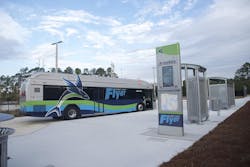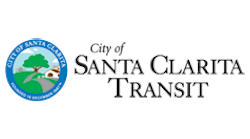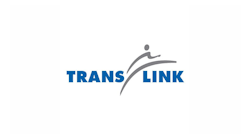Best Practices: Real-Time Information
Atlanta, Georgia
Marwan Al-Mukhtar
Executive Director
The Atlanta Streetcar
The Atlanta Streetcar is a critical first step in an exciting new age for transportation in downtown Atlanta and across the city. Smart growth requires visionary ideas and bold initiatives. The Atlanta Streetcar is both, and it represents the promise of great new things for this great city.
The Atlanta Streetcar provides missing circulation and direct connectivity to existing transit services coming into Downtown Atlanta. The 2.7 mile East-West route offers connections to the Metropolitan Atlanta Regional Transportation Authority (MARTA) and last-mile connectivity to the Atlanta BeltLine. The system uses four American-made Siemens S70 vehicles operating on an overhead power system. Each is capable of carrying up to 200 passengers.
All of us at the Atlanta Streetcar are committed to providing timely and convenient service to its riders through a new mobile ticketing app that displays clear and accurate real-time data about our public transit system.
With a few simple taps, riders can select their route, direction, and stop location to see GPS-based arrival times instantly. Soon, passengers will also be able to track our Streetcars on a real-time map.
The new app, which launched December 19, 2016, uses digital identities technology to track real-time arrival information that is easy to understand. The Atlanta Streetcar app is the first to launch with this new technology already built-in. The Atlanta Streetcar is also the first transit system in the metropolitan Atlanta area to offer an official mobile app.
The Atlanta Streetcar partnered with moovel N.A., Tozny and the National Institutes of Standards and Technology (NIST) to create a simple and easy-to-use mobile ticketing app.
Our goal is to make it easier for residents and visitors to use public transportation within the City of Atlanta. We are excited to provide this new technology to our riders and will continue to make customer–friendly enhancements and improvements which encourage growth and expansion for the Atlanta Streetcar.
Johnstown, Penn.
Josh Yoder
Director of Marketing and Planning
CamTran
In today’s world of go, go, go and hustle and bustle, riders need real-time information more than ever. With that being said, there are more outlets than ever to provide real-time information to riders. CamTran has taken a very direct approach to this issue by utilizing multiple platforms including LED signage at our Transit Center, CamText, social media, our website and Where’s My Bus real time locator in an effort to give our customers the most up to date information.
CamTran identified a need to make our customers aware of detours and related travel information that may affect their commute. In the day and age we live in, almost everyone has some type of smart device whether it’s a smart phone, tablet, laptop or desktop. With that in mind, CamTran made a concerted effort to work diligently to identify how customers are getting their information and focus their efforts on using the necessary tools to provide customers with relevant real-time information.
CamTran identified Facebook and Twitter to be useful tools in getting real-time information to the customer but the overall need for information was greater than using just social media. A more broad approach was taken using not only social media but CamText, LED signage at our Transit Center, our website and Where’s My Bus real time locator as well at the myStop app.
The LED signage at our Transit Center allows our Dispatchers to post scrolling messages alerting customers of detours and/or delays. Our CamText service is a text messaging service available for customers who register on our website to receive text message alerts with real-time information about route detours and/or delays. Our website has proved to be a very valuable tool as we can post real-time information on our homepage as we maintain our site in-house. Also, the Where’s My Bus real time locator is available on our site and shows customers exactly where their bus is in real-time. Through a recent upgrade to our Avail system, we now have a new tool at our disposal which is the myStop app. myStop allows customers to subscribe to text/email messages and alerts so they know where their bus is and when it will arrive. Also, customers can customize their alerts to see only their preferred routes and categories that they ride.
We feel that the steps we have taken and the tools that we are using give our customers the best opportunity to receive the most up-to-date real-time information so they can plan accordingly. As we look to the future, technology and our customers will be factored into decisions that are made relative to pushing real-time information out in a clear, concise and expedient matter as to not confuse the customer or provide misinformation. We have a major responsibility as our customers transportation provider to ensure that they have the necessary real-time information throughout the day as they plan to go to the doctor’s, shopping or simply a day out with friends.
Des Moines, Iowa
Luke Lester
IT Manager
Des Moines Area Regional Transit Authority
Access to real-time transportation data is becoming a necessity for residents of the Des Moines metro. As the largest mass transit provider in the area, the Des Moines Area Regional Transit Authority (DART) has made real-time data availability for riders one of its highest priorities.
Web-based Integration
DART was one of the first agencies of our size to offer real-time data in any capacity several years ago. We did this by providing basic web-based products that allowed for trip planning, basic views of vehicles on a map and email alerts. We also provided an integrated voice recording system that allowed users to call into an automated system to find real-time data for their trip, which increased availability of real-time information for visually impaired customers. All of these products were provided by our Automatic Vehicle Location provider.
Mobile Integration
The web and voice products were a good step in the right direction for making transit easier to use and more convenient for our customers. However, we knew we needed to quickly make real-time data accessible on mobile platforms for riders to access when they are on the move. Our first mobile applications became available in 2015 when we launched the RideTime app and text or SMS service. The Ridetime app allowed users to see when the next bus is coming to nearby bus stops and on which route. The text messaging service gave riders the ability to text their stop number to find the next departure times and routes. Both the mobile app and text alerts were a huge success with our riders because it gave them the ability to easily find when a vehicle was going to be at their stop.
Sharing our Data
We also make our real-time data available to developers using the standard GTFS protocol and the use of a unique api key for each developer after they sign up for access to the data on our website. Since we made our real-time data openly available, it has been integrated into several third party mobile apps and that number continues to grow as more developers request the data. This has provided more options for our riders, giving them the ability to select the app that best meets their needs.
Providing a variety of ways to access real-time data makes using public transportation easier, and has really pleased our riders. In a recent customer satisfaction survey, DART received an 84 percent satisfaction rating and I strongly believe the access to real-time data has allowed us to increase our customer’s overall satisfaction with our services. As a result, we plan to continue to grow and improve these even further in the future.
Corona, Calif.
Patrick Merrick
Executive Vice President
Tolar Manufacturing Company, Inc.
Providing timely and accurate information directly at bus and rail stops is key to boosting rider confidence, according to multiple transit agency surveys. Delivering accurate, real-time information directly at the stop to support information on the rider’s mobile device is quickly becoming the norm.
Tolar Manufacturing and Streamline Integrated Solutions (SIS) are leading the way in developing distinctive at-stop technological solutions that address growing passengers expectations. This strategic partnership pairs SIS’ world class design and forward-thinking engineering team with Tolar Manufacturing’s 25 years of award-winning experience as the industry leader in the production of all-weather transit displays, kiosks and shelters.
The first product to come from this alliance is the team’s all-in-one, real-time digital passenger information displays and free-standing kiosks now seen at Jacksonville Transportation Authority (JTA) in Florida along their First Coast Flyer routes.
These durable, environmentally robust, UL-listed displays with optional interactive capabilities integrate real-time route and schedule information, including up-to-the-moment detours and traffic updates on 32-inch digital screens. While not part of the JTA project, the displays have the ability to also offer contextually relevant, revenue-generating advertising, news and information options. Passengers being able to view this information in real-time directly at the transit stop, creates a level of comfort for them in knowing when their bus is arriving. When news and advertising is added, agencies can also engage the riders with current news and information, which helps wait times feel less lengthy.
Importantly, the ability to offer advertisers oversized, highly visible, high definition digital display advertising directly at the bus stop is an enticement that brings dollars to the transit agency and/or municipality. These unrestricted revenue dollars are great sources of income to provide even more confidence-boosting, real-time amenities at more transit stops through out the community. In fact, Tolar Manufacturing recently installed 75-inch large-format, LCD digital displays enclosed in IP-rated, weather-resistant NEMA enclosures at transit stops in Portland, Oregon. These larger than life displays at shelters are providing opportunities for both revenue-generating advertising and optional real-time passenger information.
Tolar Manufacturing is committed to continuing to work with agencies to bring more and better real-time bus stop information at transit shelters to communities through out North America. Pairing its diverse street furniture design portfolio with customized branding and cutting-edge technology allows Tolar to create a personalized Sense of Place that improves passenger confidence and supports increased use of public transportation in the communities it serves.
Altoona, Penn.
Eric Wolf
General Manager
Altoona Metro Transit (amtran)
It was only eight years ago that Amtran installed GPS on our buses and began pushing out real-time bus departures from every stop to customers through our website. We named the project myStop and worked with our tech partners, Avail Technologies from nearby State College. We were very excited to be so "cutting edge." Altoona was one of few small urban systems to offer this to their customers back then.
But of course, eight years is a long time in the technology field, so we've had to work hard to keep up. The first addition began in 2008 before the project was even completed. I was at an APTA conference in Santa Monica. I wanted to catch a bus and waited 30 minutes at the wrong bus stop before I realized my mistake. (Yeah, I'm a public transportation professional alright.)
Apple introduced the first iPhone in 2007, and I didn't own one in 2008. So I couldn't check the website for a map. But I had my cell phone so it seemed like there should be some solution. Working with Avail, we added an automated phone number so that a customer could call a local number, punch in their bus stop number, and get the same real-time bus departure that would be displayed on the website. Mobile phones were not as ubiquitous as today, but even then we knew a lot of our customers owned one because they would call from the bus to lodge a complaint. Of course, the system also worked with a landline, so a customer could call from home or work before going out to the bus stop.
Most of the project cost was installing the GPS on the buses, communicating locations to the myStop computer, and working out the predictions for bus departures. Adding one more channel to push out the information that we already had was a minor cost. (This was a recurring theme.) We started with an average of 300 calls per month which shortly zoomed up to 1,200.
The second addition occurred in 2009 just as the project was wrapping up. We posted Quick Response (QR) codes to every bus stop sign so that a smart phone customer could scan the code with a free app from their App Store. Again the cost was low which was a good thing because QR codes have never taken off in the United States like they have in Europe and Asia.
Next we added texting which was included for free in an Avail upgrade. So it didn't matter if you owned a flip phone or a smart phone. If you could text, you could get your bus departures.
The final addition was two years ago when Avail developed the myStop app, first for iOS devices and shortly thereafter for Androids. Using the phone's GPS, the myStop app can tell you the closest route, the closest bus stop, and plan your trip through Google as well as providing real-time bus departures.
In the beginning, we started with real-time bus departures only on our website. Over time, we added four more channels for our customers — cell phones and landlines, QR codes, texting, and finally the myStop app which would appear to be the be-all, end-all.
But we know better. We are working with Avail on the next step in providing useful information to our customers to make it easier than ever to ride Amtran.
Santa Clarita, Calif.
Alex Porlier
Administrative Analyst
City of Santa Clarita
Santa Clarita Transit provides transit services for the city of Santa Clarita, the third largest city in Los Angeles County with a community of nearly 250,000 residents. Each day approximately 10,000 unlinked passenger trips are completed throughout the city as well as into neighboring areas such as North Hollywood, Downtown Los Angeles, Warner Center and Century City. Santa Clarita Transit employees are committed to keeping passengers informed about transit operations. With commuters accounting for roughly 17 percent of our total ridership, and given the unpredictability of Los Angeles traffic, our passengers rely on timely service announcements. Because the social media platform Twitter is free, simple and most importantly convenient for users, Twitter has become the primary resource used by Santa Clarita Transit staff to communicate to passengers.
The @SCTBus Twitter account currently has over 1,700 followers and the number increases monthly. The Twitter account has become a reliable “one-stop shop” for transit service information. In the event that 140 characters are not enough, posts include links to the Santa Clarita Transit website at SantaClaritaTransit.com for more details under the “Rider Alerts” section. For trip-specific information, staff has a real-time arrival app, and has worked with developers of apps such as Moovit and Transit App to provide access to our real-time GPS feeds. Such partnerships allow patrons to plan multi-seat trips and view arrival times specific to their needs. In addition to smartphone technology, staff has installed a number of electronic marquees at our most popular stops which display bus arrival times but can also be updated wirelessly to display pertinent service information as necesary.
In addition to daily riders, Santa Clarita Transit must also communicate with residents who may not frequently use their services. Transit staff works closely with the city of Santa Clarita’s award-winning communications team to partner on outreach efforts for this audience. This partnership allows transit staff to inform community members (who may not follow the @SCTBus twitter account) of transit service to local events, real-time updates for special services such as at our annual Holiday Light Tour or Summer Beach Bus, and even communicate transportation options during times of emergency.
The city’s communications staff assists in pushing out announcements through the use of social media platforms such as Facebook, Instagram and Snapchat, as well as e-notify emails, texts and email messaging through the emergency notification system Nixle. Utilizing an array of platforms allows staff to target specific community groups or reach out to the entire city. The 2016 Sand Fire is a perfect example of real-time information dispersal, as it required carefully coordinated and timely notifications. Transit staff notified riders of service changes daily as a result of road closures, while communications assisted in notifying the greater community of transportation options as rail lines were closed and evacuations were ordered.
By maximizing available social media resources, Santa Clarita Transit is able to provide quality transit service and real-time information to its residents.
New Westminster, BC
Steve Vanagas
Vice President, Communications and Customer Engagement
TransLink
At TransLink, we help half-a-million people move around Metro Vancouver every day and we see every step of their trip as an opportunity to deliver a great customer experience. A big part of having that positive experience is offering our customers the opportunity to “know before they go” and have access to real-time information from the minute they plan a trip, to the moment their journey ends.
On-System
At our stations, on SkyTrain and buses, and onboard the SeaBus or West Coast Express, our staff makes announcements to advise customers of disruptions that could affect their trip. We also have TV screens and Passenger Information Displays on SkyTrain station platforms, to post important customer information, particularly Transit Alerts.
Front-Line Staff
Transit operators, SkyTrain Attendants, Transit Security, and Transit Police Officers are ready and available to direct our customers on the system and provide service updates. They are also there to ensure our passengers remain safe during delays and disruption to service.
Trip Planner
Our Trip Planner web page provides travel options based on a customer’s start and destination points. Notifications are added when there’s a serious detour or delay, and customers can refine their searches using search options.
Transit Alerts
Our Customer Information team works tirelessly to ensure any disruption on the system gets relayed to our customers as quickly as possible. Alerts are posted to our Twitter account, on our website and Trip Planner, and are sent directly to customers who’ve subscribed to Alerts via email or SMS.
Social Media Channels
Our Twitter account has an active community of more than 140,000 followers and in 2016 alone we sent more than 29,000 tweets. Alerts are posted to our Twitter account, and our staff provides real-time assistance to everyone who sends us a message.
We also leverage our Facebook page and corporate blog to amplify information about major service alerts to ensure customers on our various channels are informed.
Next Bus
Our Next Bus service provides customers with real-time bus departure times via our mobile website or SMS text messaging. On our mobile site, customers can use GPS to find buses closest to them, view real-time departures by stop, or follow their buses every move via our map view. Customers can also text their bus stop and route number to 33333 and get the next two real-time departures.
What’s Next?
We are implementing a 10-Year plan to invest in our transportation network and that includes investing in systems to keep our customers informed as they travel across the region. Upcoming projects will improve real-time signage displays, improve the availability of real-time “on the go” information and provide even more data to help our customers get around the region quickly, reliably and safely.
Santa Barbara, Calif.
Rick Wood
President and CEO
CHK America
Our next-generation ConnectPoint digital signage products are now being deployed by several transit agencies across the country. Our Connectpoint Digital Bus Stop and Connectpoint SmartStop are solar and battery powered, enabling transit agencies to deliver real-time information to any bus stop or shelter. The response from passengers to date has been tremendous, with in-person discussions confirming what all the studies indicate: riders want this information provided to them at the stops.
Our first product to launch was the Connectpoint Digital Bus Stop. These “smart city” digital signs feature a high resolution E-Ink based screen that provides enormous messaging flexibility. The digital signs offer real-time departure and schedule information as well as service alerts delivered using battery or solar power. The Digital Bus Stop is available in three sizes: 10-, 13- and 32-inch. They are easy to install and can be retrofitted to existing bus stops or shelters. They are managed remotely via our web-based backend.
The Digital Bus Stops were deployed over a year ago by Pittsburgh’s Port Authority of Alleghany County. They are also being piloted by WMATA, Santa Clara VTA, San Antonio VIA, Fort Worth Transportation Authority, Sonoma County Transit and many more.
The web-enabled Connectpoint Interactive Dual Screen 55-inch Touchscreen Kiosk is a good option for transit centers and rail stations and for both indoor and outdoor locations. The 32-inch top screen is used for advertisements and agency service announcements while the interactive 55-inch bottom screen allows for intuitive interaction to explore transit options such as wayfinding directions, an overview of an entire route, and next departure times from every stop in your system and mapping for the first and last mile.
Port Authority of Alleghany County installed its first of 5 kiosks 18 months ago with volume usage of approximately 14,000 interactive queries per month per kiosk. Regional Transportation Commission of Southern Nevada (RTC) deployed its first two kiosks one year ago, with approximately 16,000 interactive queries per month. And Dallas Area Rapid Transit (DART) deployed their first kiosk at Love Field Airport six months ago and is also experiencing significant usage.
Rick Wood | CEO, Connectpoint
Connectpoint Founder and CEO Rick Wood has led the transformative company since 2018.






